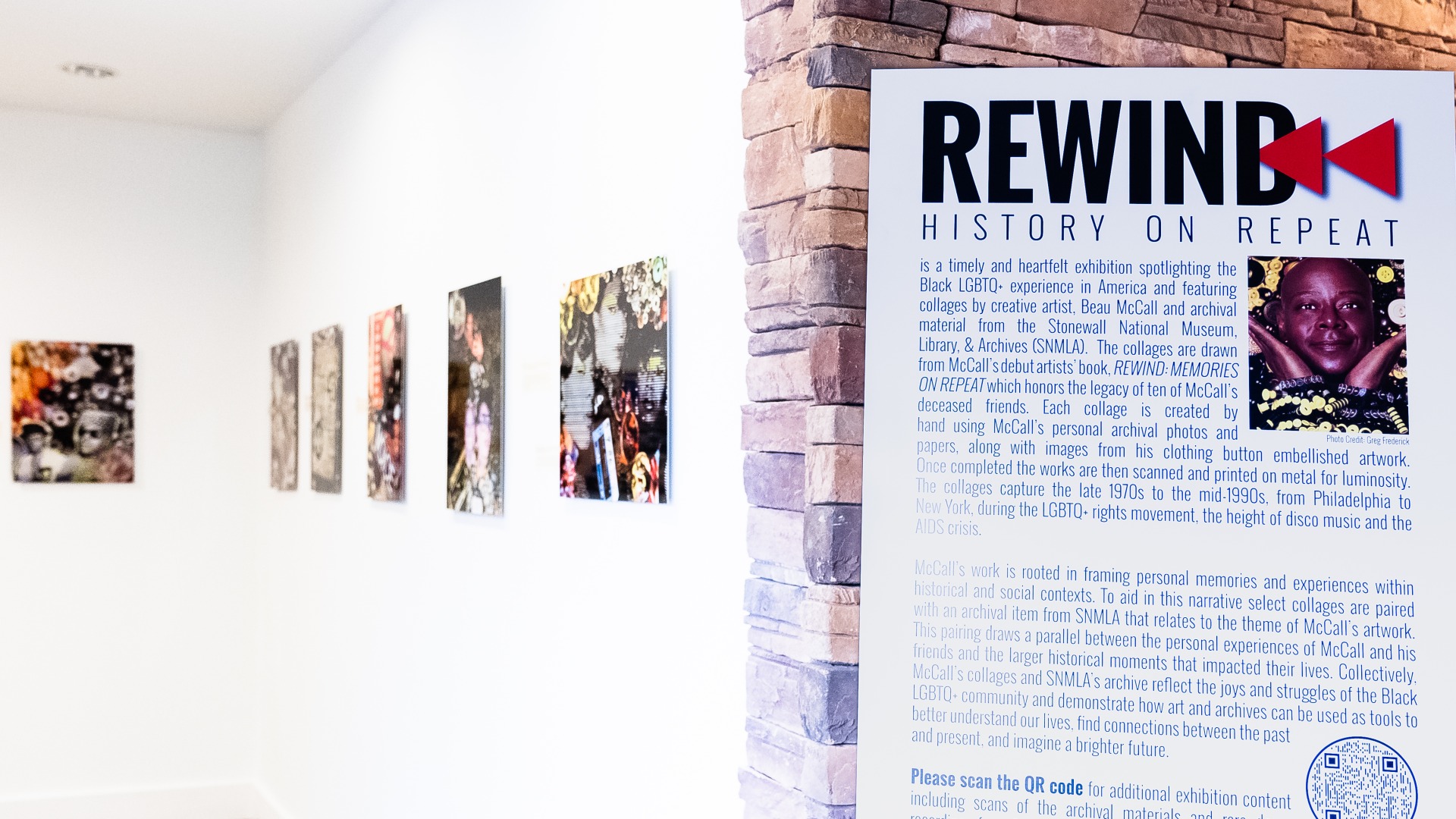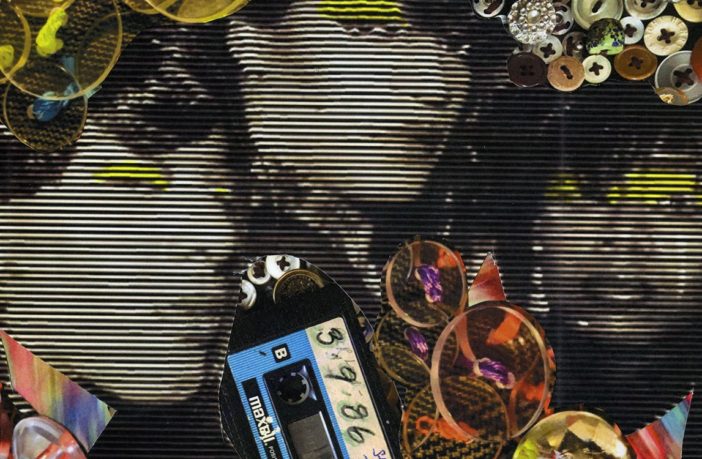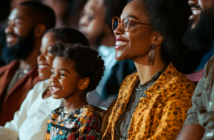Mixed media artist Beau McCall, better known as ”The Button Man,” has found a touching way to remember friends from years past. His new solo exhibition, Rewind: History on Repeat, opens at Stonewall National Museum, Archives, & Library (SNMAL) in Fort Lauderdale, Florida, today.
Featuring McCall’s collages that spotlight the Black LGBTQ+ experience in America, the installation captures the heart of the community in motion, from the 1970s through the 1990s. “I wanted was to tell the story of the power of friendship and how chosen families can mold a person’s life,” he shares.
McCall has been using buttons to create stunning wearable and wall art for more than four decades. First inspired by his mom and grandmother’s button collections, he’s utilized the fashionable and functional garment accessory as part of his own personal retrospect of the Pride movement, from the height of disco music and the AIDS crisis.
EBONY: What was your motivation for Rewind: History on Repeat?
Beau McCall: I wanted to highlight some of my closest friends who left a lasting impression on me in the early part of my gay life. It was a time for all of us when we didn’t have much representation of Black LGBTQ+ people in mainstream media. So the bond we forged with one another was very important. It allowed us to create our own safe space where we could journey into adulthood and explore our sexual and gender identities with the support of one another.
The artist Beau McCall. Image: Greg Frederick.
Why are collages your chosen medium?
Over the years I preserved photos of us growing up. And I combined those photos with images of my clothing button embellished artwork. Buttons for me are personal keepsakes, like old photographs, that tell stories and hold important memories. So even though my friends are not here physically, they will live on through my art spiritually.

Rewind: History on Repeat exhibition. Image: courtesy Stonewall National Museum, Archives, & Library.
What does the exhibition explore for you?
The exhibition explores certain facets of the Black LGBTQ+ experience in the United States of America. I am telling my personal story of my life in the late 1970s through the early 1990s during the LGBTQ+ rights movement, disco music and the AIDS crisis. The collages are paired with archival material from the Stonewall National Museum, Archives & Library to add a wider historical context. We have materials such as a rare drink ticket from The Smart Place, one of the few Black LGBTQ+ friendly bars in Philadelphia in the 1980s and papers that speak to the AIDS crisis and anti-trans violence. People will get to see what my friends and I were experiencing in that time, and how that speaks to the wider experience of Black LGBTQ+ people in our country. It’s a history lesson but a very personal one that will resonate with a lot of people on an intimate and deeply emotional level.
Why it is so important for LBGTQ art themes and artists be seen and represented?
At the moment Florida is at the center of LGBTQ+ rights issues. The NAACP issued a travel advisory for Florida saying the state is hostile to the Black and LGBTQ+ communities, and Florida’s policies are aiming to restrict access to LGBTQ+ books and lessons in educational settings. Our nation has a tendency to rewrite or erase history in our educational system. So with this exhibition, we have an opportunity to preserve history and to tell LGBTQ+ stories for future generations. We need to be seen and represented so we are not erased from history, so that our rights are not denied and so that future generations have a solid foundation to live their lives. We need to preserve these histories so we can look back in order to move forward.
What do you consider your most moving piece in the exhibit?
It’s the collages of the Strange Beauties. I founded this punk rock band with my two best friends at the time, Antoine, a.k.a. DeeDee Somemore, and Tracy Monroe. Disco was fading out, hip hop was coming in and punk rock was emerging, and we were fascinated with punk rock after seeing Debbie Harry of Blondie. We went to The Hot Club, which was possibly the only punk club in Philadelphia at the time. While we saw no representation of people of color or LGBTQ+ folks at this club, the atmosphere was LGBTQ+ friendly and we had a very electrifying experience because they were slam dancing on broken glass. They wore weird costumes with safety pins and slashes. We were doing punk drag with Mohawk wigs and Andre Douglas Fantasy wigs and wore makeup. Everything we wore came from the thrift shop, before upcycling was popular, and cost less than $20.
We wanted to tell our own stories about how we were living and what inspired us. We also felt like there weren’t many Black people represented in the punk scene and we wanted to help break down that barrier. Although we didn’t last long or make a record, we did plenty of demo recordings. And we inspired someone very special named Moi Renee, who was also one of my friends and is featured in the exhibition. We all came from the same neighborhood in Philadelphia. Moi left for New York before Tracy and me. When he returned he saw us doing our thing. He told me that we inspired him to do what he was doing in New York—making music and being a nightlife fixture and drag performance artist. Just last year Beyoncé sampled Moi’s classic dance song, “Miss Honey,” on the track “Pure/Honey” from her Renaissance album.
Our band only lasted from around 1983 to 1986. I lost Antoine very early on due to AIDS; and the day before I started creating the collages in 2020, Tracy passed. These moments remain a major part of my life.
See Rewind: History on Repeat at the Stonewall National Museum, Archives, & Library through September 8, 2023.


